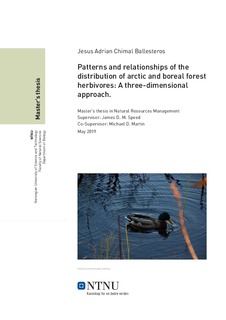Abstract
Biodiversity is a complex concept that presents three primary facets: genetic, species and ecological diversity. However, biodiversity is usually viewed and valued in terms of the number of discrete species present. This approach has been demonstrated to be insufficient. Therefore, three synergetic methods that function as proxies for the three facets of biodiversity, genetic, species and ecological diversity, are used in this study to provide a better understanding of biodiversity. These methods are phylogenetic diversity, species richness and functional diversity respectively. The relationship between phylogenetic or functional diversity with species richness yields information on the evolutionary history and ecological niche representation through clustering and dispersion. The arctic and boreal biomes are under great threat from climate change and land-use change and provide important ecosystems services for both, local and global communities. In order to better understand these biomes, we’ve focused on a group of taxa that has a wide range of functions in the ecosystem and that is composed from several genetic lineages, the vertebrate herbivores. Therefore, the aim of this study is to further our understanding of the biodiversity patterns and relationships of arctic and boreal herbivores. We found that all three biodiversity measures increased towards the south, possibly correlated to plant productivity. However functional diversity did not present such a strong gradient with the values in the north not reducing drastically as in the other measures. We have identified a “doughnut” pattern of functional dispersal in the arctic and boreal biomes with functional clustering at high and low latitudes and functional dispersion at mid-latitudes. Which indicates that at high and low altitudes herbivores are functionally similar from different environmental pressures, such as predation and abiotic conditions at low and high altitudes respectively. Furthermore, we have identified areas of a possible radiation event in south eastern Russia near the Mongolian border as well as an area of a relatively recent invasion of herbivores in the Labrador Peninsula. Our study demonstrates the importance of including trophic dynamics in biodiversity assessments and calls for future studies that explore the relationship between biodiversity measures and trophic interactions.

